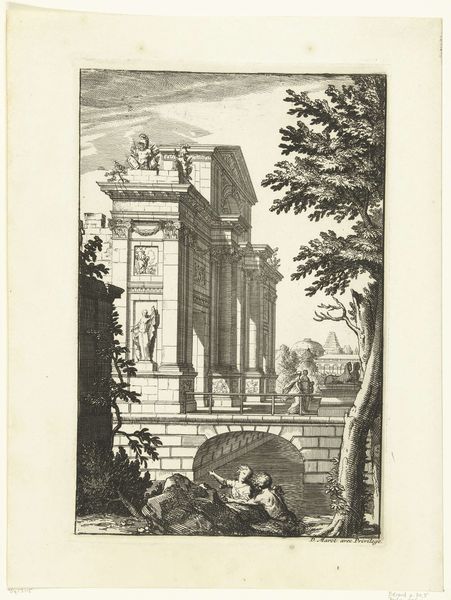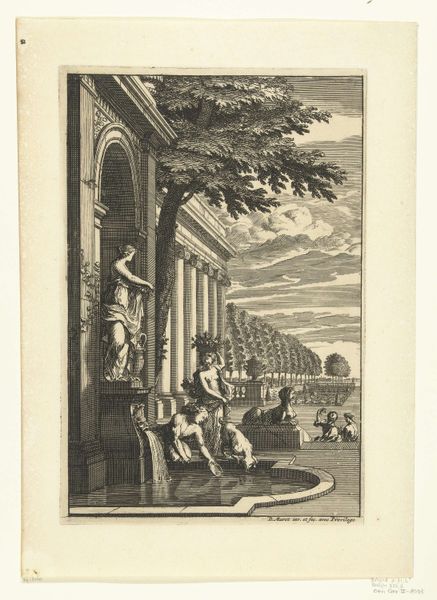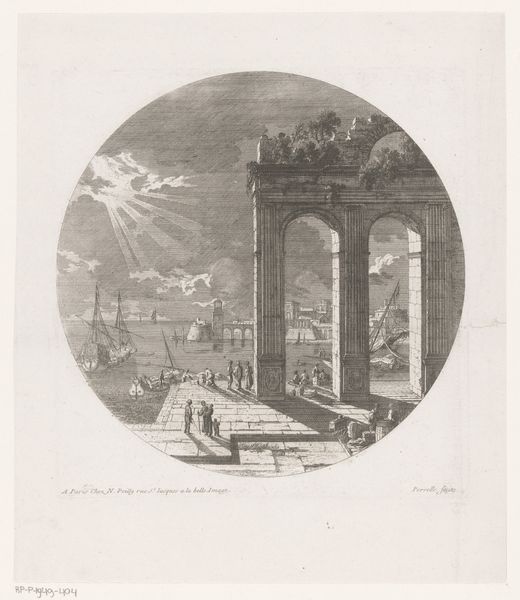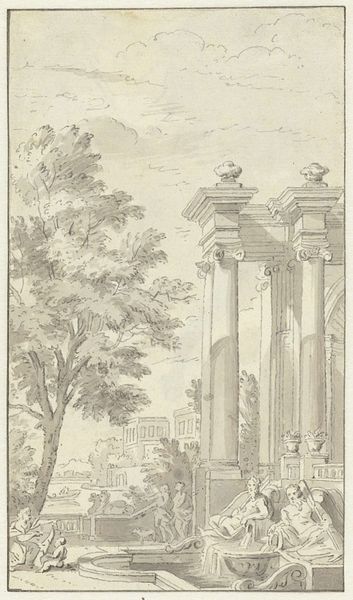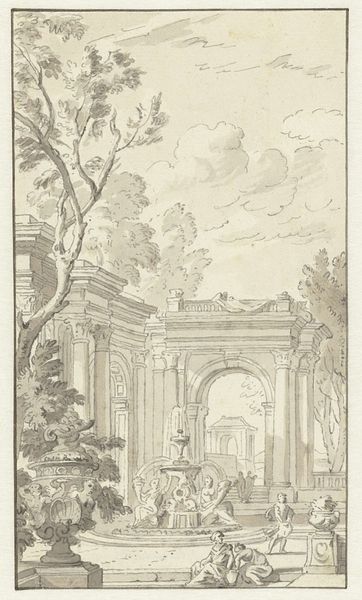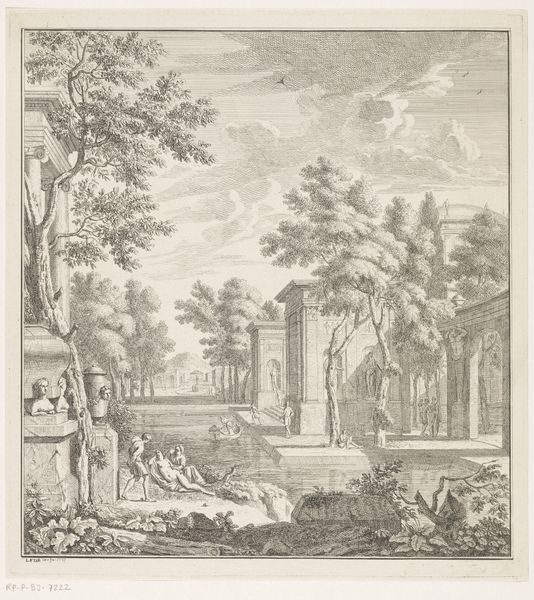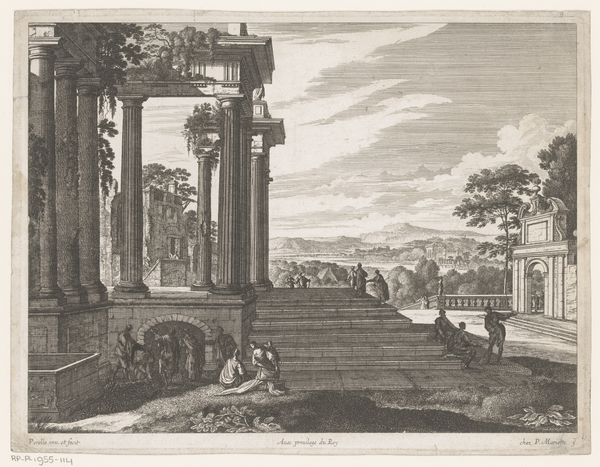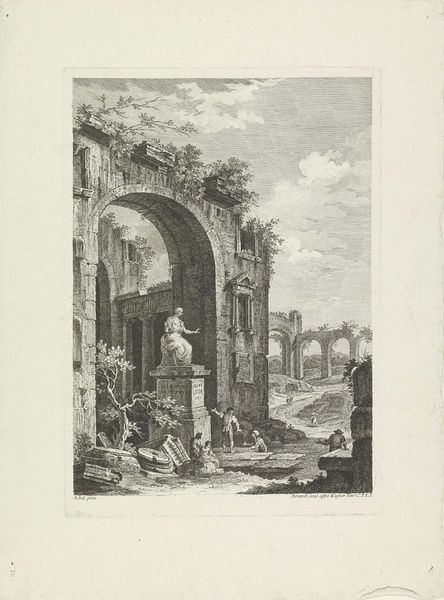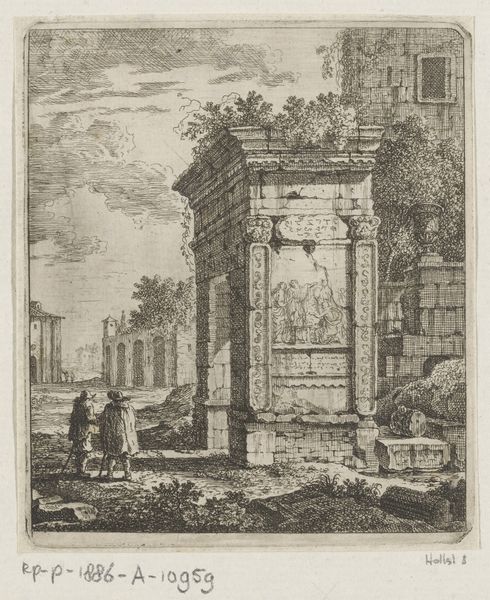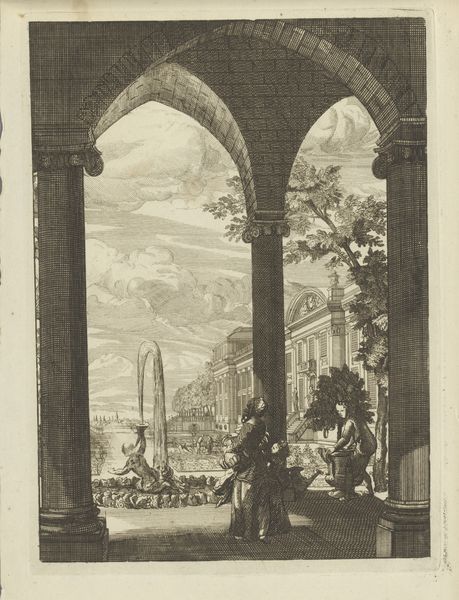
print, etching, architecture
#
baroque
# print
#
etching
#
landscape
#
form
#
line
#
cityscape
#
architecture
Dimensions: height 249 mm, width 164 mm
Copyright: Rijks Museum: Open Domain
Editor: This is "Colonnade met uitzicht op een haven," or "Colonnade with a view of a Harbour," an etching by Daniël Marot, dating from around 1703 to 1712. It's quite striking. The sharp lines create such an intricate landscape, contrasting an artificial colonnade with a natural seaside vista. What symbolic layers do you see woven into this composition? Curator: The enduring allure of these garden landscapes resides in their emblematic arrangement. Observe how Marot positions figures in relation to the architecture and the harbor. Note the groups in leisurely repose versus the laborers struggling with the boat at sea; notice the sheep reclining beside those lovers in the shade, and how all of these groups occupy distinct positions relative to the viewer’s gaze. Can you interpret what that suggests to you? Editor: It feels like a division, almost a hierarchy. Are the people closer to us, enjoying leisure, somehow elevated above those working? And does the architecture separate those people even further from nature? Curator: Precisely. The colonnade, though beautifully rendered, serves as a visual barrier. Marot uses architecture here not merely as a backdrop but as a symbol of control, order, and, dare I say, aspiration? This kind of scene satisfies both a yearning for natural simplicity and the impulse toward constructed dominance. How does it make you feel? Editor: Uneasy, maybe? Admiring the craftsmanship while recognizing that it represents a specific, privileged viewpoint…it’s complicated. Curator: Indeed, the complications are the point. These landscapes offer idealized visions, while simultaneously hinting at the social structures they perpetuate. What have you discovered while examining its layers of symbolic imagery? Editor: I realize how much these landscapes are curated. Nothing is accidental, and everything contributes to a message—a statement about power and order during that time. Curator: And the echoes of that message continue to resonate, which is why this Baroque artwork still captivates us today.
Comments
No comments
Be the first to comment and join the conversation on the ultimate creative platform.
